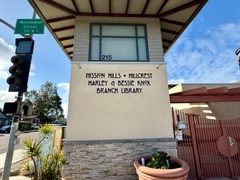
California Senate leader Toni Atkins (D-San Diego) says the time is now to reform state policies surrounding the confluence of wildfire, climate change and energy. She is urging residents in San Diego and throughout California to educate themselves about wildfire risks where they live.
“Inaction is not an option,” Atkins said. “Climate change is here, and it’s threatening our communities, our energy systems, our economy and our way of life. With wildfires increasing in frequency and intensity, we’ve seen what can happen if we don’t act. The costs to human life and well-being are unacceptable.”
Fire season is now a year-round phenomenon, and the fires are growing ever more ferocious. Six of the 10 most destructive wildfires in California history have raged within the past two years, including the worst one — last year’s Camp Fire, which killed 85 people and destroyed more than 18,000 structures, including most of the town of Paradise, as it torched more than 150,000 acres.
San Diego County experienced the front end of what could be called the modern wildfire plague in California. The Cedar Fire of 2003 and the Witch and Harris fires of 2007 — respectively the fourth, sixth and 19th most destructive fires in our state’s history — destroyed a combined 5,018 structures and killed 25 people.
In response to those blazes, San Diego Gas & Electric (SDG&E) invested more than $1.5 billion on wildfire mitigation and grid resiliency. SDG&E, one of three investor-owned utilities that supply energy to California homes and businesses, is now considered a national industry leader in recognizing the presence of conditions that create wildfire danger and neutralizing the threat.
Despite that, two leading credit agencies have recently downgrading the utility’s rating, each citing catastrophic wildfire risks.
“I applaud SDG&E’s innovative efforts,” Atkins said. “Still, it’s clear that we need comprehensive reforms to better manage growing fire risks.”
Meanwhile, Pacific Gas and Electric Company (PG&E), the state’s largest investor-owned utility, serving more than 16 million ratepayers across Northern and Central California, has entered bankruptcy, due to costs incurred from its role in numerous recent wildfires. Southern California Edison and SDG&E have warned that they could be just one fire away from joining PG&E in seeking Chapter 11 protection.
In April, Governor Gavin Newsom released a comprehensive report on the danger that wildfires create for California’s economy, energy infrastructure and public safety amid advancing climate change.
Atkins said the Senate is currently digging into the details of the governor’s report in advance of proposing policy changes. “The priority of Senate Democrats will be protecting ratepayers, fire victims and the reliability of electric and gas service to California’s consumers,” she said. “While we continue our recovery and rebuilding efforts in the communities devastated by recent wildfires, we also have to decide how we will respond to future disasters. We must take proactive steps to limit the damage.”












Discussion about this post